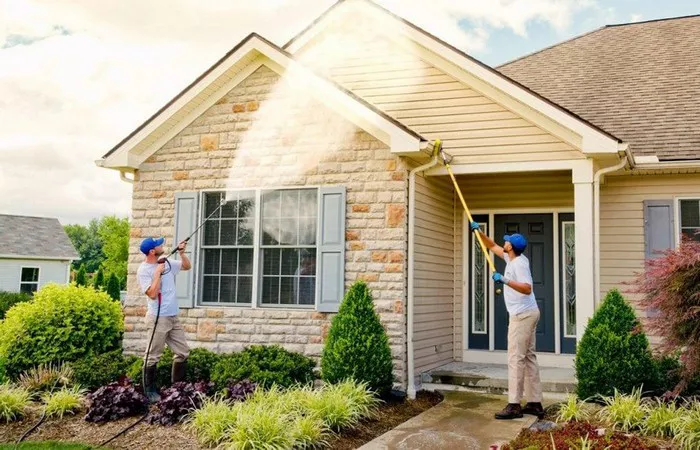Pressure washing services have become increasingly popular for both residential and commercial properties. Whether it’s to enhance curb appeal, maintain cleanliness, or prepare surfaces for painting, the demand for pressure washing continues to grow. However, one of the most critical aspects of running a successful pressure washing business is accurately pricing your services. In this article, we’ll delve into various pricing strategies, factors influencing prices, calculating costs, profit margins, quoting jobs, competitive analysis, seasonal considerations, and providing templates and tools for estimating jobs.
Overview of Pricing Strategies
When it comes to pricing pressure washing jobs, there are several strategies to consider. The three primary pricing models include:
1. Per Hour Pricing: This model involves charging customers based on the number of hours spent on the job. While straightforward, it may not always accurately reflect the value of the service provided.
2. Per Square Foot Pricing: With this model, prices are determined by the total square footage of the area being pressure washed. It provides a more transparent pricing structure and is commonly used for larger projects.
3. Flat Rate Pricing: Flat rate pricing involves charging a fixed fee for specific services, regardless of factors like time or square footage. This model offers simplicity and predictability for both the customer and the service provider.
Each pricing model has its pros and cons, and the choice often depends on the nature of the job and preferences of both the service provider and the customer.
Factors Influencing Prices
Several factors influence the pricing of pressure washing jobs:
1. Property Size: The size of the property being pressure washed directly impacts the amount of time, labor, and materials required for the job. Larger properties typically command higher prices.
2. Location: Geographical location plays a significant role in pricing, as cost of living and local market rates vary from region to region.
3. Condition of Surfaces: The condition of the surfaces to be cleaned also affects pricing. Tough stains, mold, mildew, or other contaminants may require additional time and resources to remove.
4. Accessibility: The ease of access to the property and the surfaces to be cleaned can impact pricing. Difficult-to-reach areas may require specialized equipment or techniques, adding to the overall cost.
5. Additional Services: Additional services such as window cleaning, gutter cleaning, or sealing may also be offered, each adding to the total cost of the job.
Understanding these variables is crucial for accurately pricing pressure washing services and ensuring profitability.
Calculating Costs
Before determining the final price for a pressure washing job, it’s essential to calculate all associated costs. This includes:
1. Materials: Calculate the cost of cleaning agents, detergents, water, and any other consumables required for the job.
2. Labor: Estimate the labor hours required to complete the job and multiply it by the labor rate.
3. Overhead: Factor in overhead costs such as equipment maintenance, insurance, vehicle expenses, and administrative expenses.
To calculate the total cost, use the following formula:
Total Cost = Materials Cost + Labor Cost + Overhead Cost
Profit Margins
Once you’ve calculated the total cost, it’s time to add a profit margin to ensure the sustainability and growth of your business. Profit margins typically range from 10% to 20%, depending on various factors such as market competition and business goals.
To calculate the final price with profit margin, use the following formula:
Final Price = Total Cost / (1 – Profit Margin)
Quoting Jobs
Creating accurate quotes is essential for building trust with customers and avoiding disputes later on. When quoting a pressure washing job, consider the following tips:
1. Conduct Site Visit: Inspect the property in person to assess its size, condition, and any specific requirements.
2. Detailed Estimate: Provide a detailed breakdown of the services to be performed and the associated costs.
3. Factor in Contingencies: Anticipate any potential challenges or additional requirements that may arise during the job and include them in the quote.
4. Be Transparent: Clearly communicate the pricing structure, including any additional fees or charges, to avoid misunderstandings.
5. Follow-up Communication: Follow up with the customer to address any questions or concerns they may have and ensure clarity before proceeding.
Competitive Analysis
Understanding local market rates and positioning your services competitively is crucial for attracting customers and maintaining profitability. Conduct research on competitors’ pricing, services offered, and customer reviews to identify opportunities for differentiation and pricing strategies.
Consider offering unique value propositions such as environmentally friendly cleaning solutions, satisfaction guarantees, or bundled service packages to stand out in the market.
Seasonal Considerations
Demand for pressure washing services can vary significantly depending on the season. Factors such as weather conditions, holidays, and seasonal maintenance schedules can influence demand. Adjust pricing accordingly to reflect changes in demand and ensure optimal utilization of resources throughout the year.
For example, offer promotions or discounts during slower seasons to incentivize customers and keep your team busy during off-peak times.
Templates and Tools
To streamline the process of estimating pressure washing jobs, consider using templates or tools designed for this purpose. These resources can help you quickly and accurately calculate costs, generate quotes, and track job progress.
There are various software applications and online platforms available specifically for estimating pressure washing jobs, which can save time and improve efficiency in your business operations.
Conclusion
Pricing pressure washing jobs requires careful consideration of various factors, including pricing strategies, cost calculations, profit margins, competitive analysis, seasonal fluctuations, and the use of templates and tools. By understanding these elements and implementing effective pricing strategies, pressure washing businesses can maximize profitability while delivering exceptional value to their customers.

